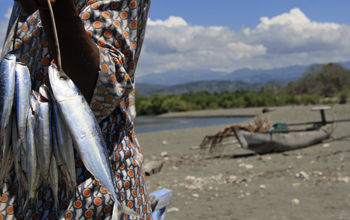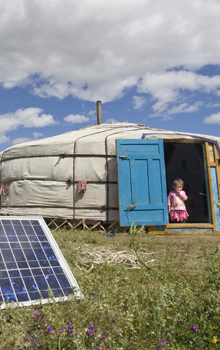Research Brief
Foreign Aid, Capacity Building and Climate Change
- The goal of economic growth combined with environmental protection in developing countries requires not just financial and technological resources, but also the local capacity to design and implement successful policies.
- Aid programmes for capacity-building related to climate change are most effective when they are designed, carried out, and monitored in collaboration with local partners so that they are country-owned and demand-driven.
The capacity to address climate change
Developing countries have contributed negligibly to the present climate change problem but are the most vulnerable to its negative effects, bearing 70–80 per cent of the costs of environmental damage. Developing countries need to pursue a path that achieves harmony between economic development and environmental conservation. However, even when the developing countries have the necessary financial and technological resources, many of them lack the capacity to do so.
Capacity constraints in developing countries are a serious impediment to the pursuit of low-carbon development. These countries need effective individuals, organizations, and political and economic systems that enable them to make more effective use of resources. By providing training, education, incentive structures, and resources foreign aid can play a role in strengthening capacities in developing countries.
 Fundamentals of effective programmes
Fundamentals of effective programmes
Capacity building programmes have the best chance of succeeding when they are country-driven, include a wide range of national stakeholders, and involve a high degree of in-country ownership. Such activities can translate into raised awareness of environmental issues, as well as heightened activities for mitigation of climate change and increased capacity for adaptation, which in turn contributes to a country’s sustainable development.
In addition, donors must ensure that the internal resources and competence of aid recipients are sufficient to implement their interventions.
Sharing information
The global nature of climate change makes the exchange and sharing of information and expertise at all levels especially beneficial in order to promote best practices and facilitate climate-related research. This requires the establishment of information databases in developing nations, where gaps in capacity currently exist for data collection, dissemination, and accessibility by the international community.
Capacities have also been strengthened in developing countries for international co-operation, collaboration, and networking, which facilitate climate information sharing and pave the way for international north-south and south-south co-operative climate research.
In addition, monitoring, reporting, and sharing of information on capacity-building activities are important for improving the effectiveness of future aid interventions.
It is also important to promote co-operation among capacity-building projects. Before the start of any programme, donors should co-ordinate to reduce duplication. A climate change capacity-building co-ordination centre can facilitate information exchange. Policy makers in beneficiary countries should take the lead with donors in capacity-building efforts to harmonize donor support around their own priorities.
 Building the knowledge and drive for change
Building the knowledge and drive for change
Policy makers are likely to assign lower priority to addressing climate change than to other domestic problems. It is therefore important to work with the policy makers responsible for the design and implementation of development strategies to inform them of the risks of and possible solutions to climate change.
More efforts are also required to raise public awareness about the urgency of tackling climate change. These could include educational programmes as well as specific scholarship programmes to encourage research on climate change.
Scaled-up capacity-building support is urgently needed to deal with the shortage of climate change professionals in Africa, especially at the PhD and postdoctoral levels. This is viewed as one of the critical impediments to the dissemination of climate-related information and knowledge, and the conduct of scientific climate research. PhDs and postdoctoral researchers could also contribute to furthering the standard of education in the least developed countries, which lack sufficient professional teaching staff for undergraduate and postgraduate study on climate change.
Given the significant impact of climate change they experience, representatives of the least developed countries can play a strong role in international climate negotiations when they have the relevant capacity. Therefore, additional aid efforts could support policy makers’ ability to take part in these negotiations.
Integrating capacity-building into broader programmes
Capacity-building activities should not be isolated events, but rather an integral part of climate aid programmes. Capacity-building relates to many support arrangements and should be part of programmes such as climate change adaptation and mitigation, response measures, green technology transfer, and development of low-carbon market mechanisms.
Climate change capacity-building programmes should be long-term and flexible, able to adapt to changing circumstances and emerging challenges. This requires sustainable financial resources.
- Donors should shift the focus of foreign aid for capacity-building from technical assistance ‘fi xes’ and supply-driven aid to a demanddriven, outcome-based, and country-owned approach.
- Given its cross-cutting nature, foreign aid for capacity-building should be an integral part of support arrangements in all relevant areas.
- Capacity-building should be a long-term process, applied in a fl exible manner so as to take changing circumstances and emerging challenges into consideration.
Promoting green technology
In spite of the progress being made in capacity in developing countries for adopting clean technology, it is clear that greater efforts are still needed. Donors should invest more to develop local capacity to support the diffusion of green technology. This includes both supporting the ability to access and apply clean technology in developing countries, and enabling the proper conditions for adoption of the technology—overcoming financial barriers, market failures, and technology design such as adaptation to local conditions.
 Join the network
Join the network